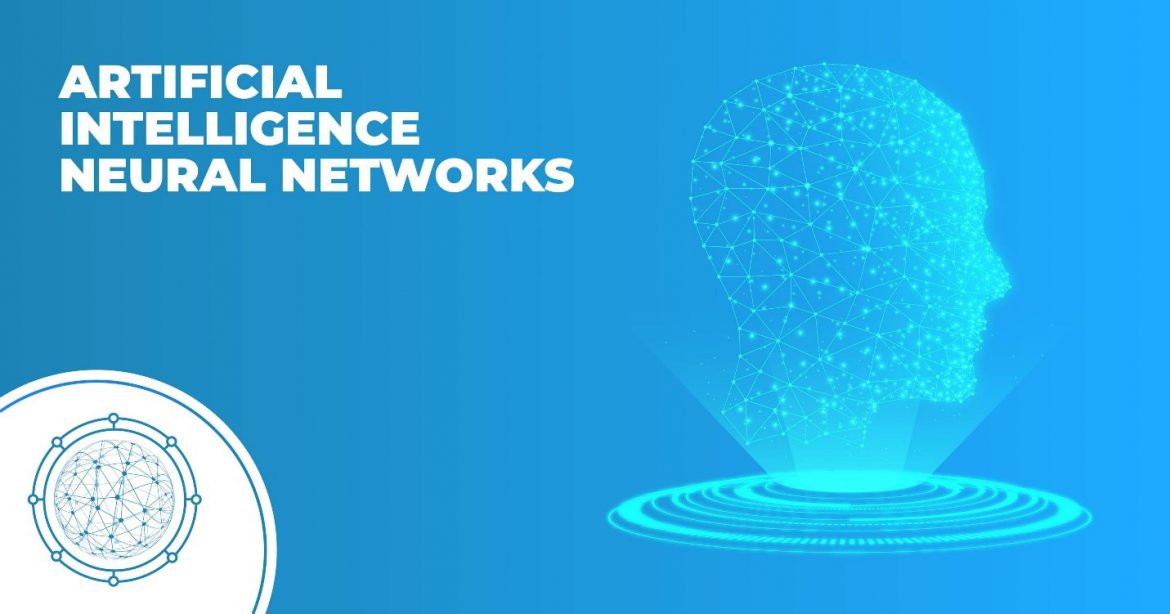Table of Contents
Artificial Intelligence Neural Networks 2022
Artificial intelligence (AI) refers to complex algorithms that, often through sensing and reacting to a characteristic of their world, execute tasks in a way comparable to human brains. This may mean learning in unusual ways to solve problems, understanding the complexities of speech, or showing some sort of imagination that is human-like. One of the Artificial intelligence advancements is the neural network, inspired by the human brain system that assists computers and robots act like human beings.
A Neural Network is inspired by the framework of the human brain. It is a model of Artificial Intelligence that is used in unsupervised learning (more specifically, Deep Learning). A Neural Network is a web of interconnected entities known as nodes in which a basic computation is accountable for each node. A Neural Network acts similarly to the neurons in the human brain in this manner. It is also called Artificial intelligence neural networks.
This article allows you to understand the structure and operating mechanism of Artificial Intelligence Neural Networks.
How AI can be used in Neural Networks?
Artificial intelligence used in Neural Networks includes a vast number of processors running in parallel, which are organized in layers. Similar to optic nerves in human eye vision processing, the first layer collects the raw data as information. Each successive layer receives and processes input data from the previous level as output, analogous to optic nerve neurons obtaining signals from those close to it. The output is provided by the final sheet.
Neural networks can be adapted, i.e., they can be adjusted according to the training and run in parallel to provide further world knowledge. If a “desired” output is generated by the network, then there is no need to modify the trained input data and vice versa. If the network produces errors arising from an “undesired” output, then the machine alters the trained input data to boost the performance.
Artificial intelligence (AI) and neural networks embody extremely exciting and efficient methods used to solve multiple real-world problems based on machine learning.
Artificial Intelligence Neural Networks Applications
Image recognition was the first area in which neural networks were successfully deployed, but the technique has spread to many fields, such as:
- Production of natural language, translation, and generating language.
- Discovering and evolving medicines.
- Predicting the stock market.
- Path preparation and optimization of the distribution driver.
Artificial Intelligence (AI) can also be used in neural networks to recognize data patterns or trends, which are well-tailored to uses for modeling or forecasting, including:
- Forecasting revenues
- Regulation of Manufacturing Process.
- Customer analysis.
- Validating evidence.
- Management of Risk.
- Target Marketing.
What is the difference between Artificial Intelligence and Neural Networks?
In information technology, artificial intelligence (AI) and artificial neural networks (ANN) are two fascinating and interconnected domains. However, some distinctions between the two are worth learning about.
- Artificial intelligence is a huge area that seeks to build intelligent devices, something that, depending on how you interpret intelligence, has been done several times. Even though we have “Jeopardy” machines that can win and defeat chess champions, AI’s goal is typically seen as a search for general knowledge or intelligence that can be applied to different and irrelevant situational problems.
- Through creating a basic framework program to respond to a challenge and gain input on how it performs, artificial intelligence neural networks attempt to replicate the learning mechanism on computers. By doing the same issue thousands of times and changing its response according to the input it gets, a machine will refine its response. A new problem will then be presented to the machine, which it will solve in the same manner as it learned from the previous one. Computer scientists can educate a computer to be a generalist by changing the concerns and the number of methods for addressing them that the computer has mastered.
- Neural networks, and more precisely, artificial intelligence neural networks, use a series of algorithms to replicate the human brain. A neural network consists of four major components at a base level: inputs, weights, bias or threshold, and outputs while the aim of Artificial intelligence programming are the three intellectual capabilities: learning, logic, and self-correction.
- The implementation of a mathematical algorithm to evaluate outcomes or to estimate situations and issues is artificial intelligence. Artificial intelligence is often used to handle data individually, removing the person from the entire assignment to function on his or her own.
- In the human brain, artificial intelligence neural networks are constructed, with neuron nodes intertwined like a web. There are hundreds of billions of cells called neurons in the human brain. Each neuron consists of a cell body that, by transporting information to (inputs) and away (outputs) from the brain, is capable of processing knowledge.
- To minimize manual labor, artificial intelligence aims to create autonomy in computers, involving a lot of high-level and complicated computation. Artificial intelligence is often meant to create models that to a certain degree approximate perception and human comprehension. By emulating cognition, the aim is to create self-sufficiency, ensuring the machine no longer requires any human feedback.
- Artificial intelligence neural networks have hundreds or thousands of artificial neurons that are connected by nodes, called processing units. These processing units are made up of Input and output units. Based on an internal weighting scheme, the input units obtain varying sources and frameworks of information and the neural network aims to learn from the information provided to generate one output report. A set of learning rules called backpropagation, an abbreviation for backward propagation of error, is also used by artificial neural networks to optimize their performance outputs, just as humans require instructions and specifications to come up with an inference or output.
Does all AI use Neural Networks?
No, not all AI uses neural networks, but all neural networks use Artificial intelligence. Artificial Intelligence neural networks are used for the majority of software systems and industrial enterprises. Their primary goal is to address complex issues such as pattern recognition or face recognition, and many other uses include speech-to-text transcription, data analysis, check processing handwriting recognition, weather prediction, and signal processing.
What is one of Artificial Neural Networks in Machine Learning?
Machine Learning is an artificial intelligence technique in which an algorithm learns to make decisions from data processed by the system. An approach to machine learning in which algorithms process signals through interconnected nodes called artificial intelligence neural networks.
Artificial Neural Networks are a particular form of algorithm for machine learning modeled after the human brain. That is, just like the neurons in our nervous system are capable of learning from previous data, the artificial neural network is also capable of learning from the information in the form of projections or classifications to have answers.
Conclusion
Neural Network comes under the same Artificial Intelligence area, but you can also say that Neural Network is a subfield of Machine Learning, wherein neural networks are deep learning that artificially drives the most human-like intelligence. Machine learning serves mainly from what it has learned. We can infer this by stating that the next evolution of machine learning is neural networks or deep learning. It explains how a computer can correctly make its own decision without the programmer having to tell them so.
Are you interested to know more about Artificial Intelligence Neural Networks?
If you liked our article about Artificial Intelligence Neural Networks, you may find interesting the following articles:
Artificial Intelligence Pros And Cons
5+ Artificial Intelligence Pros And Cons To Help You Understand It Better!
The Rise of Artificial Intelligence
Artificial Intelligence Pros and Cons
5+ Artificial Intelligence Pros And Cons To Help You Understand It Better!
For more information on Artificial Intelligence Neural Networks, follow us on our Linkedin page High-Tech trends.





